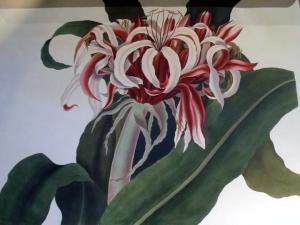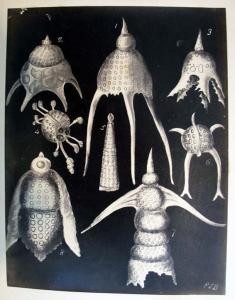The other day I was looking for books by the botanical artist Priscilla Susan Bury (1799-1872) in our library catalogue. I now understand that one must first search under her husband Edward, where you will find a listing for Bury, Edward, Mrs. This will be Priscilla.
Born Priscilla Falkner, in Rainhill, Lancashire, Mrs. Bury had no academic training in either Art or Botany. She grew up drawing plants raised in the greenhouses of her family home east of Liverpool. In 1829, she proposed to a few friends that she publish these drawings in a book called simply Drawings of Lilies. The drawings were to be lithographed and the book to be sold for 5 guineas.
Amazingly, two years later the first of ten fascicles was indeed published, but with a new title and a new printing process. Now called A Selection of Hexandrian Plants, the job of reproducing Bury’s drawings was taken over by Robert Havell, Jr. (1793-1878). He used the same aquatinting process he was concurrently using to complete John James Audobon’s Birds of America. Like Audobon’s project, Havell reproduced Bury’s drawings on large plates (64 x 48 cm.) printed in vibrant colors and then, later finished by hand in watercolor. Havell was also the book’s publisher and Audubon was listed among its subscribers. It is unclear whether Bury subscribed to Audubon’s book.
The hexandrian plants (those with six stamens) include lilies, crinums, pancratiums and hippeastrums. In the preface for this work, the amateur Bury writes that she intended this as an “endeavour to preserve some memorial of the brilliant and fugitive beauties of a particularly splendid and elegant tribe of plants”.
Fifty-one plates appeared in ten fascicles, the last in 1834, but whether or not the text is Bury’s is unclear. Princeton’s copy, a gift from an anonymous donor, contains the first thirty leaves of text and first thirty leaves of plates from the first printing. Bury’s original drawings can still be seen at Dumbarton Oaks outside Washington D.C.
From 1860 to 1861, Bury brought out yet another unusual botanical study, this time using photography to reproduce her drawings. As in her first project, Bury had either great luck or great forethought in finding the most talented artisans as partners. The 12 plates in Polycystins began with specimens collected and then mounted on slide, which Bury drew while studying them through a microscope. These drawings were captured in albumen silver prints by the London firm of Negretti and Zambra. Henry Negretti (d. 1879) and Joseph Warren Zambra (d. 1877) had been partners since 1850, as photographers and retailers of scientific instruments. They are perhaps best known as the official photographers of the 1853 re-erected Crystal Palace. The volume is today among the earliest photographically illustrated books published.


I have a copy of this fascinating book on Polycistins. I soon found Dr Davy of course but was chiefly interested in Mrs Bury and her 'drawings down the microscope'. I'm delighted with the information on this page.
Thank you
Doreen Smith
Dorset Geologists' Association